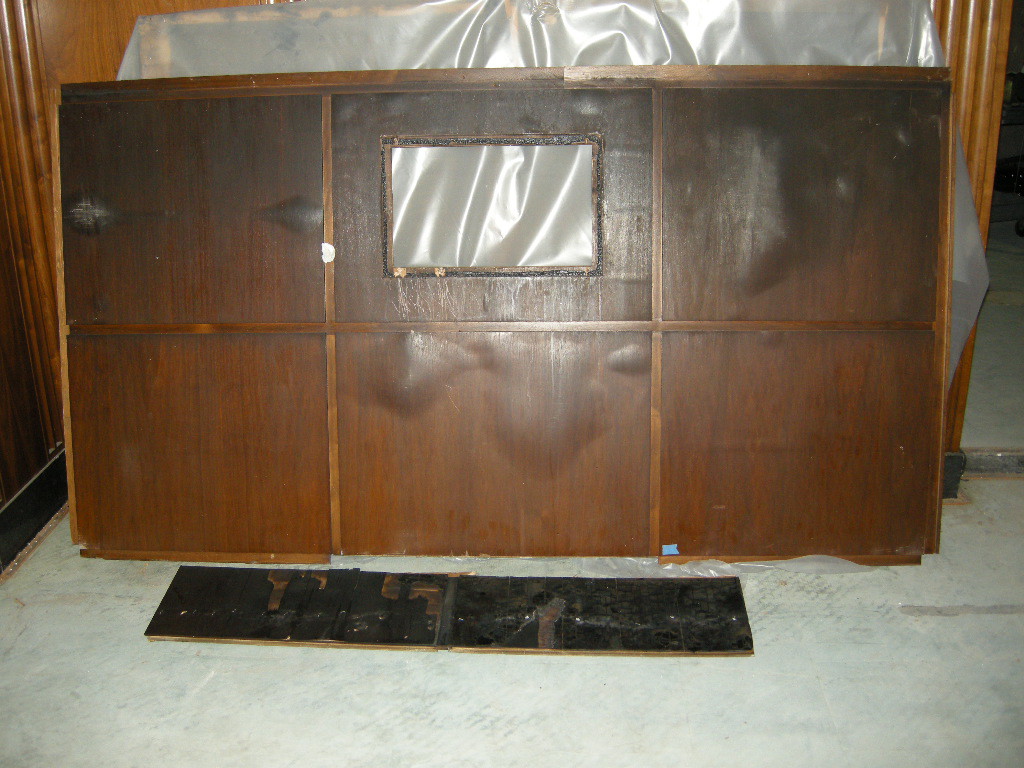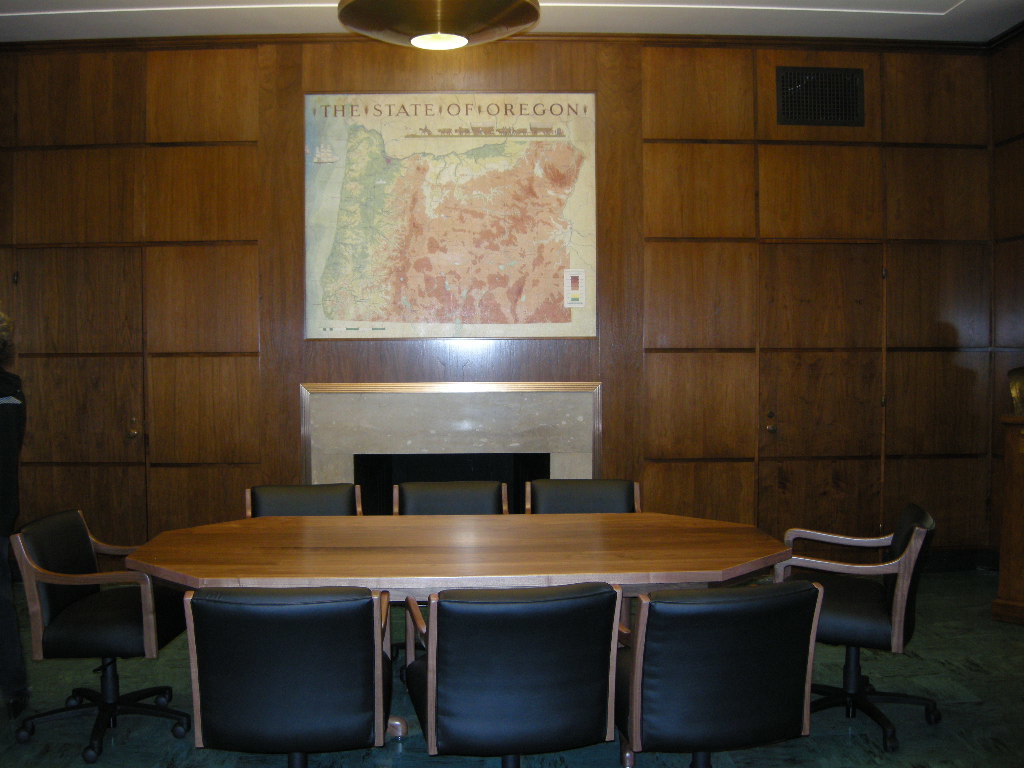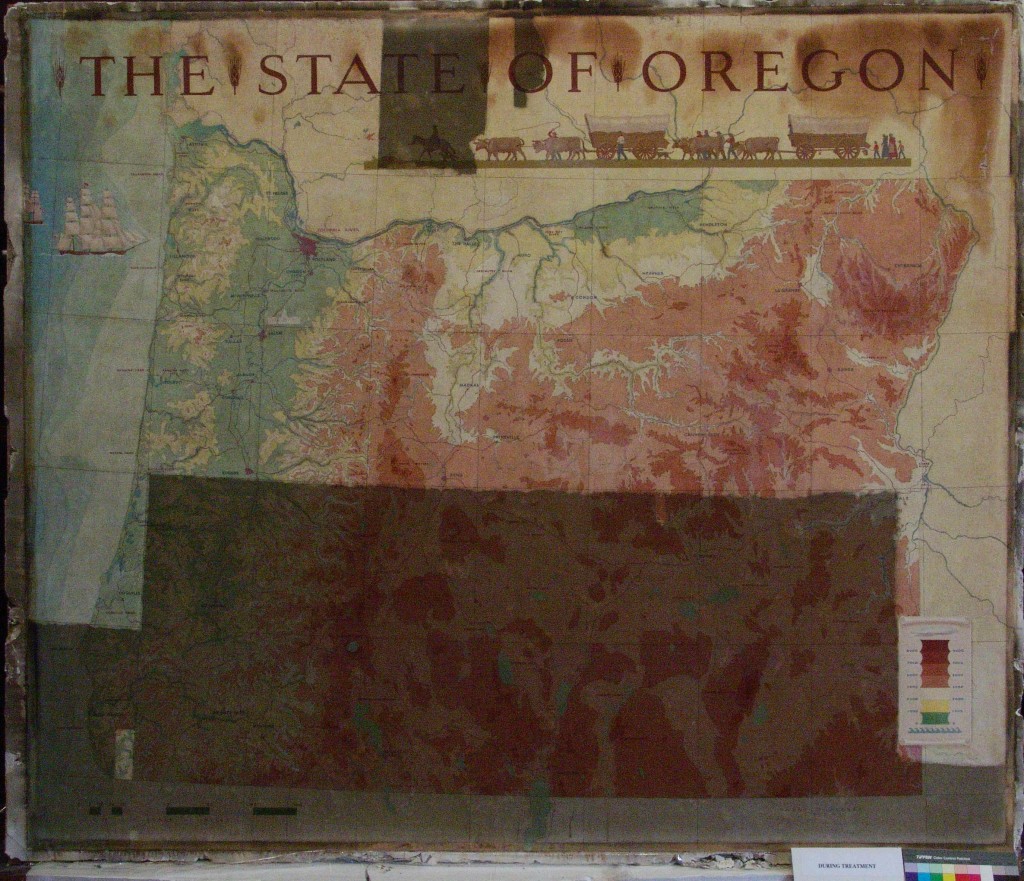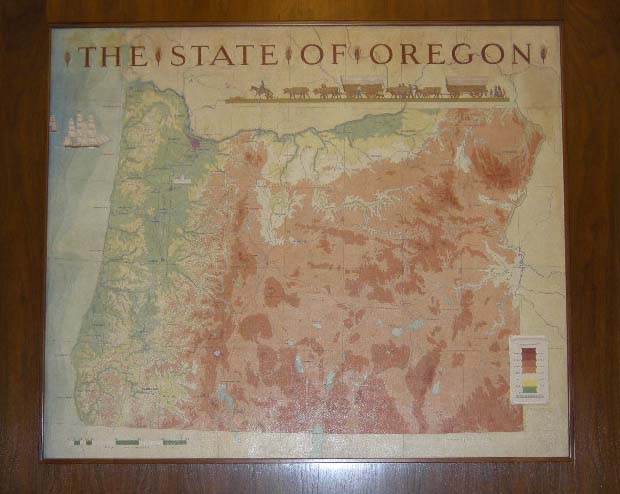The Oregon State Capitol
The Oregon State Capitol is a landmark of Modernistic design based on Classical Architecture, and was designed by the New York architectural firm of Trowbridge and Livingston in association with Francis Keally. Completed at the height of the Depression in 1938, the Capitol received funding assistance from the Federal Emergency Administration of Public Works (P.W.A.). Constructed of reinforced concrete, the building is distinguished by angular, unadorned exterior elevations and a massive, ribbed lantern – all sheathed in brilliant white Vermont marble. Artists of national reputation, Ulric Ellerhusen, Leo Friedlander, Barry Faulkner, and Franck Schwarz, collaborated in the winning design and were employed at the recommendation of the architects to produce sculptural relief and paintings of a taut and finely wrought decorative program. Erected in the Modernistic style, the Capitol was sensitively enlarged in 1977 by the Portland firm of Wolff Zimmer Gunsul Frasca in association with Pietro Belluschi.

On Labor Day 2008, a construction fire damaged the exterior Vermont marble, interior Oregon walnut wood panels and a painting by Barry Faulkner adorning the Governor’s Ceremonial Suite. A team of preservation architects and art conservators collaborated to guide the faithful restoration of this important Oregon icon. All restoration work was based on historic research and field analysis of existing materials, but conservation principles were applied differently to the restoration of interior finishes compared to The State of Oregon artwork by Barry Faulkner.

Fire destroyed all the wood panels on the south wall and caused extensive smoke and heat damage on the east and west walls. The north wall suffered minor smoke damage with little to no impact from heat. Oregon Walnut, a species of wood no longer readily available or milled, was incorporated into 30” x 30” veneer panels separated by 1” wide solid walnut splines. Each panel was book matched resulting in pairs of cathedrals providing strong visual character. It was determined through both field and laboratory testing that the original finish system was a shellac formula readily used during the late 1930s. Conservation strategies had to consider: proper dismantling techniques of the remaining panels; reproduction of original finishes using volatile compounds or the replacement with new finishes; repair options for the various degrees of damage to the wood panels, incorporation of new replacement panels, and anticipate potential similar catastrophic events in the future.

The remaining panels were measured, documented and classified by the extent of damage. Drawings were produced that recorded each panels’ location relative to the adjacent panel and position on the wall and compass orientation. It was determined that each panel and spline were individually blind nailed to a wood lath support grid which was in turn directly fastened to a back-up clay tile wall. Remaining panel construction from the south wall provided evidence of the construction techniques. As a result, it was determined to the remove the panels in an assembly as large as practical for transportation to a controlled restoration shop environment. At the shop, a more thorough, up-close evaluation of the damage was surveyed. During review of the restoration options, discussion ensued over the incorporation of pre-existing conditions, post fire damage, to include evidence of repair, or should all the panels have a uniform appearance.
After considering the impossibility of achieving uniformity with new panels and cleaned and repaired panels, it was decided to remove all finishes, including the protective shellac, by sanding to bare wood. Following the removal process, each panel was stained to match a patina color visible on a panel protected from damage. The final clear coat was a catalyzed finish formulated to provide long-term protection.

To further embellish the Governor’s Suite, a map of the State of Oregon was painted by Barry Faulkner, signed and dated in 1938. The work was framed within the wood paneling over the marble mantel on the ¬East end of the Governor’s Suite. Faulkner painted the work in oil on canvas that was subsequently marouflaged to a section of the wall. This section of the wall was clearly part of the original design of the room and was reserved and prepared especially for the painting. As was customary in New Deal era murals, Faulkner’s work was painted on canvas off site and then adhered to the wall when the construction process was advanced or complete. Also quite typical of New Deal murals was the use of a lead paste adhesive for the marouflage, which was suggested in the later W.P.A project guidelines to the artists. The presence of the lead paste adhesive proved to be decisive in the formulation of a method for the deinstallation of the piece. The tenacity of the adhesion of the canvas back to the plaster via the lead paste is such that separation of the canvas from the plaster was impossible, and so the entire section of wall needed to be removed intact for the conservation treatment. The section of wood framing was carefully removed from the clay tile wall substrate by severing the nails that fastened the wood to the tile, and cutting the vertical studs above and below the work. Special precautions were made to protect the fragile paint surface during transport of the work to the conservation lab.

The fire’s effects caused extreme heat damage to the painting primarily in the upper and right areas of the composition, with numerous areas of blistered paint, and many sections of blistered delamination of the canvas from the substrate plaster. The combustible by-products of the fire combined with embedded soot and smoke created a deposited layer of darkened material that obscured the image. The solubility testing results were consistent with the combustible origin of the fire, and a solution of organic solvents was used to remove the deposited surface material, revealing the original chromatic palette of the work. It also became evident that the painting had been cleaned in a previous treatment. The fragile areas of heat-blistered paint were consolidated and smoothed. The areas of blistered delamination were brought back into plane with localized use of humidity and mild head and then, once smoothed into place, were adhered to the substrate plaster. The large blister in the upper right corner of the painting protruded 1 ½” from the plaster surface. Areas of loss were filled, textured and retouched to match the original surface and color. A protective layer of varnish was applied to the painting.
The exposed finish plaster surrounding the painting was also cleaned with dry sponges, consolidated and filled. Some original pencil drawings by the artist were found on the plaster that had been hidden under the paneled frame.

The most extreme heat damaged areas were irreversibly altered in both their color and texture, and the full extent of the color shift was not revealed until after the cleaning process. In these darkened areas, Gamblin conservation colors were applied over the varnish layer to retouch the creamy yellow ground color only, leaving the darkened red color of the letters in THE STATE OF OREGON untouched. This manner of retouching allowed the painting to acquire a more finished appearance in line with the decisions made regarding the restoration of the wood paneling, while conserving also the memory of the history of the piece.
Written by Peter Meijer AIA, NCARB, Principal. A special thanks to Nina Olsson, Nina Olsson Art Conservation, LLC, who helped write this post in conjunction with Peter Meijer. Nina Olsson Art Conservation , LLC is a private practice for the conservation of paintings and polychrome sculpture based in Portland, Oregon.
